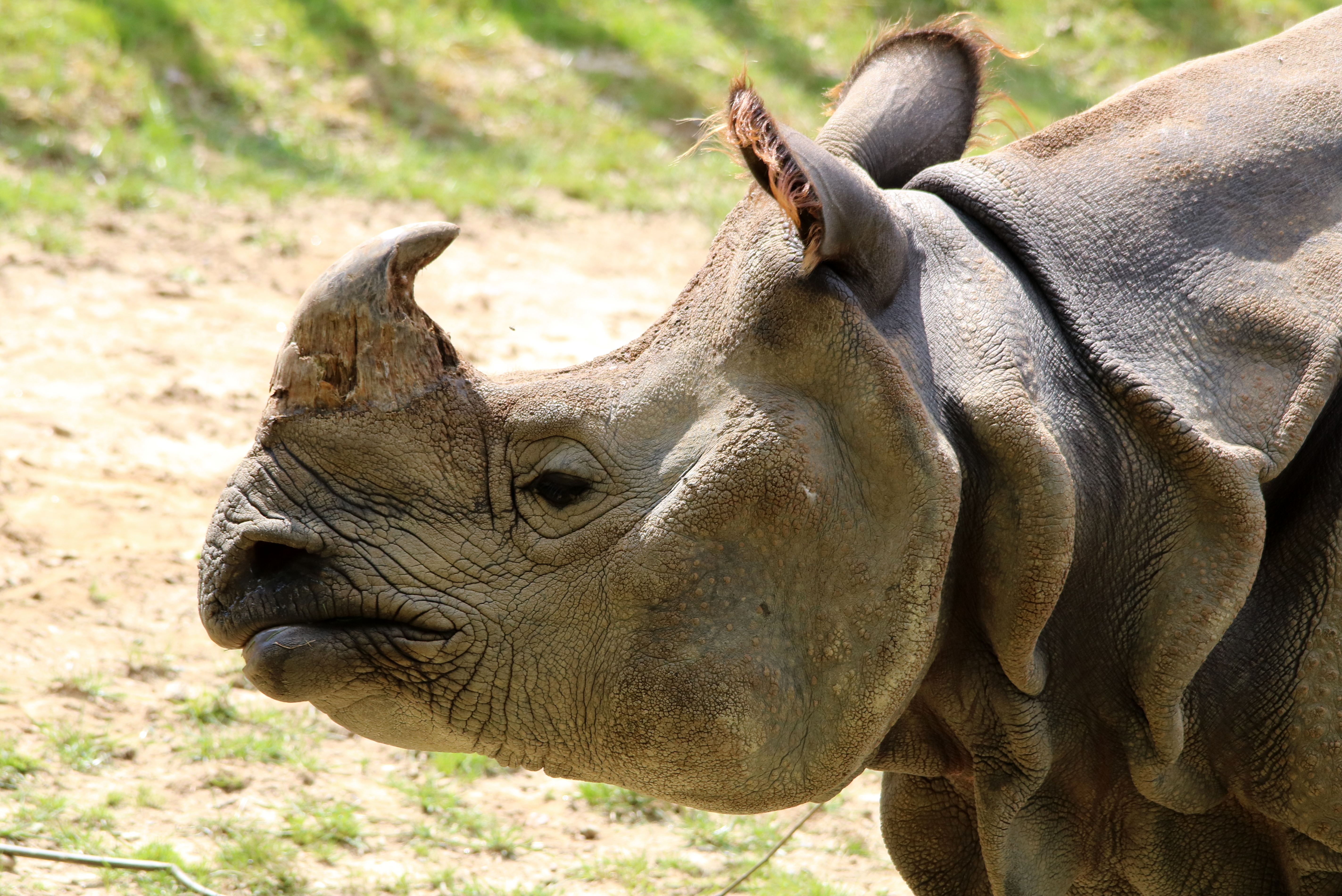One-horned rhinoceroses are the subject of a new study of the differences in appearance, behavior, and evolutionary history of the Indian rhinoceros (Rhinoceros unicornis) and the Sundaic rhinoceros (Rhinoceros sondaicus) – and in doing so, has renamed one of the world’s rarest mammals.
ADVERTISEMENT
The Sundaic rhino, also called the Javan rhino, is one of the world’s rarest mammals. Listed as Critically Endangered by the IUCN the species lives in one small isolated area: Java’s Ujung Kulon peninsula. The species has a slender skull, with teeth that are more specialized for eating softer foods like leaves. Their skin is covered in scale-like polygons that are distinctive of the species and form a mosaic-like pattern across the animal’s body. Interestingly, in this species, females do not have a horn, but rather a small protrusion.
By contrast, the Indian rhino (also known as the greater one-horned rhino) is listed as Vulnerable by the IUCN and has a more widespread distribution through India, Nepal, and Myanmar. Indian rhinos also have teeth more specialized for eating tougher plant material like long grasses rather than browsing for leaves. They are also considerably larger than the Sundaic rhino, with a much heavier-set body and deep skin folds.

Indian rhinos are large land mammals.
“Adaptations of large terrestrial mammals to various environments are linked to the diversity of food items they can consume, which is reflected in the variation of their dental and cranial morphologies,” the researchers write in the paper, “In rhinoceroses, these adaptations are identified in their teeth structure and head posture.”
As well as physical differences, the rhinos have behavioral differences too, the Sundaic rhinos are more solitary preferring to wander alone through the forest, while Indian rhinos temporarily form social groups called crashes.
The two species used to overlap in range, leading researchers to wonder if their evolution was tied together. The earliest fossils of the Sundaic rhino date back 8-9 million years ago to Myanmar. However, the team believes that environmental pressures – and therefore niche partitioning – caused the two species to evolve independently, developing differences in their teeth, feeding, and behavior.
ADVERTISEMENT
Because of this and the separation of the African rhinos into different genera, the team proposes that the Sundaic rhino should be called Eurhinoceros sondaicus in recognition of its differences and evolution.
“Recognizing Eurhinoceros sondaicus as a distinct genus provides a more accurate reflection of its evolutionary history and ecological specialization,” they assert in a statement. “This refined classification not only enhances our understanding of rhinoceros evolution but also provides a clearer framework for conservation planning, helping to tailor strategies for the protection of these critically endangered animals.”
The paper is published in the journal ZooKeys.
Source Link: New Name Suggested For One Of The World's Largest And Rarest Critically Endangered Species